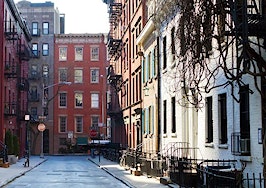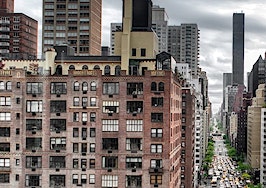- To reboot the 421-a tax exemption, de Blasio must meet with the Republican-lead State Senate and Gov. Andrew Cuomo.
- 421-a was a tax abatement program that expired this past January.
- Prior to its cessation, 421-a gave 10-year tax exemptions to new housing developments with three or more units on vacant, underutilized or “nonconforming” zones.
- While REBNY stands behind 421-a improvements, the Pratt Center for Community Development claims the program was being abused prior to its phasing out.
Mandatory Inclusionary Housing may have passed through the City Council, but in order for his plan to take action, New York Mayor Bill de Blasio must motivate developers — perhaps with an amended tax exemption.
To reboot the 421-a tax exemption, de Blasio must meet with the Republican-lead State Senate and Gov. Andrew Cuomo — at least, if de Blasio hopes to inspire new developments throughout New York City.
Given the high price of land and construction, 421-a tax breaks were designed to relieve initiation costs for developers. Without them, it’s feared developments in the low-to-moderate level housing tiers will suffer.
421-a was a tax abatement program that expired this past January. The Real Estate Board of New York (REBNY) and the Building and Construction Trades Council of Greater New York failed to settle on labor wages, putting the program into a pause — at least for now.

Mayor Bill de Blasio/Facebook
REBNY vocalized concerns about eliminating 421-a and the effects on affordable housing, stating the city will lose a projected 18,000 below-market units over the next four years. Prior to its dismissal, 421-a spurred 60 percent of production in affordable units citywide in 2015 alone, according to trends cited in the Mayor’s Management Report and HPD.
“The renewal of 421-a is one critical element of the City’s plan to address our housing shortage,” said REBNY president Steven Spinola in a statement last year, prior to the abatement close. “Some of the units would end up as high-end luxury condominiums and some of the middle-and-low-income housing now in the works would be lost forever. Without 421-a, our housing crisis will take an immediate turn for the worse.”
Who did 421-a benefit?
Prior to its cessation, 421-a gave 10-year tax exemptions to new housing developments with three or more units on vacant, underutilized or “nonconforming” zones. The program was intended to protect the owner from paying the inherent increase in property taxes after project completion.
The options within 421-a varied, especially for buildings developed with government assistance.
If the exemption is revived, Manhattan builders south of 110th Street could receive a 10-year exemption from property taxes for market pricing – meaning standard rates. The first two years receive full exemption, followed by 20 percent increases every two years after. Additionally, developers below 110th on government assistance could receive 20-year exemptions.
New properties between 14th and 96th Streets could purchase off-site certificates from other low-income developers at around $12,000 to $15,000 a piece. Owners could also get a 20-year tax exemption if they set aside 20 percent of affordable units for low-income residents making below 80 percent of the area’s median income.
With the exception of the Greenpoint-Williamsburg waterfront, developers in outer boroughs could receive a 15-year exemption for as-of-right market rates with no affordability requirement. Under the previous 421-a exemption, the first 11 years were fully exempt, followed by 20 percent drops in tax breaks every year after.
Builders outside of Manhattan could receive a 25-year exemption if they set aside 20 percent of units for low-income households, received substantial government assistance or were located in a “Neighborhoods Preservation Area,” such as Corona or Jackson Heights.
While REBNY stands behind 421-a improvements, the Pratt Center for Community Development claims the program was being abused prior to its phasing out. Only 7 percent — or 4,905 of 69,000 subsidized units — between 1985 and 2002 were dedicated to affordable housing for low-to-moderate-income families, according to a report from the organization. The tax program, as outlined in the report, was costing the city over $300 million per year and was assisting even the luxury tier developers in lower Manhattan and downtown Brooklyn.
Where does de Blasio go from here?
In order to revive 421-a, de Blasio has to appeal to Assembly Speaker Carl Heastie and State Senate Majority Leader John Flanagan, in addition to Gov. Cuomo. In the past, Gov. Guomo has sided with the Building and Construction Trades Council of Greater New York on increasing wages, which de Blasio’s team says could increase construction costs severely.
Unfortunately, the city does not have an alternative for 421-a, says an Observer report. While 420-c and Article II abatements assist developers in conjunction with non-profits or Housing Development Fund Companies, these breaks don’t work alongside MIH.









